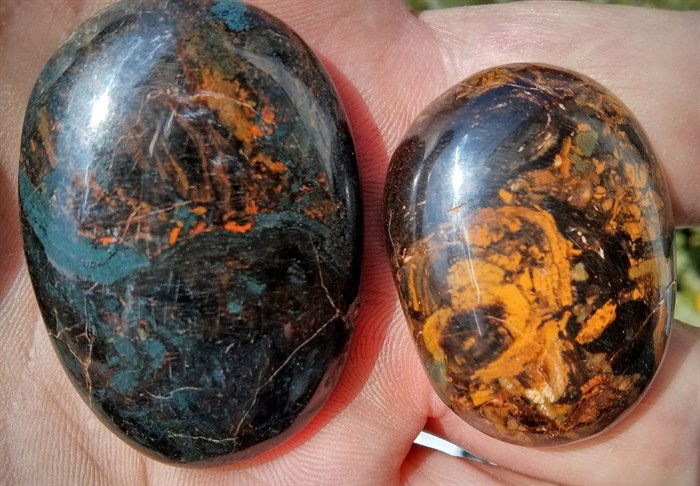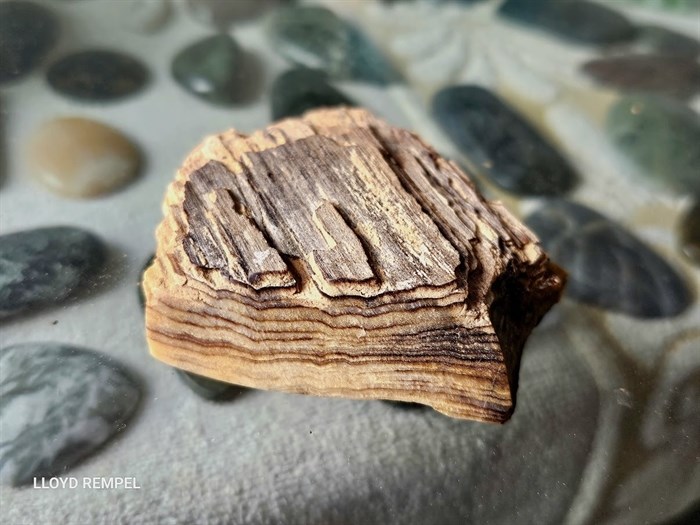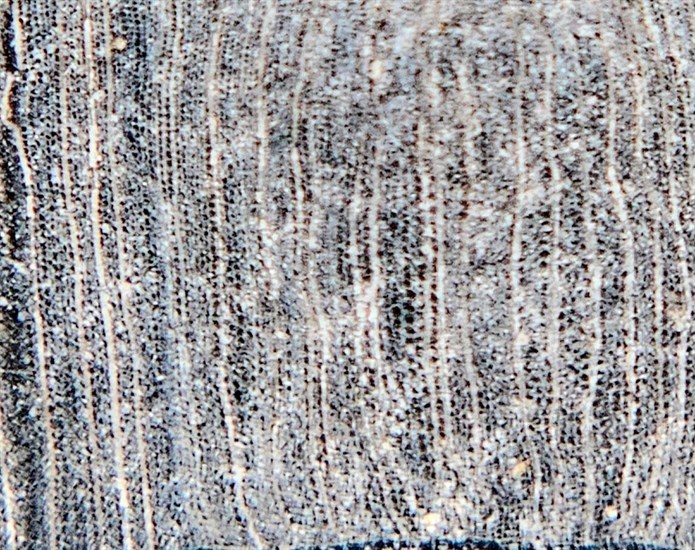
These pieces of Jasper were found in the Kamloops area.
Image Credit: SUBMITTED/ Llyod Rempel
November 27, 2024 - 6:00 AM
Kamloops rockhound and geology enthusiast Lloyd Rempel loves rocks and has been collecting them and studying them for decades.
An active member of the Thompson Valley Rock Club, Rempel is a wealth of knowledge and loves getting others excited about rockhounding, a hobby that is much more than finding precious stones in the Thompson Region.
“I’ve always been interested in rocks,” he said. “We have such a varied geology and wide variety of rock types around Kamloops, who couldn’t be interested in them?”
Kamloops has an abundance of rockhounding sites, and chiselling into rocks in the area is like finding pieces of a story that goes back millions of years.
“All of BC basically from the Rocky Mountains at Alberta border to the coast has been accreted, meaning rock materials came from somewhere out in the ocean and slammed up against the North American plate, materials come from different regions out there," Rempel said.
“In general, we have a varied geology because of that.”

Botryoidal chalcedony plate from the painted bluffs; Kamloops BC
Image Credit: SUBMITTED/ Lloyd Rempel
The most easily recognizable rocks that are found are agates, a variety of chalcedony which is a form of microcrystalline quartz. Agates come from volcanic activity.
“Volcanics started over 100 million years ago in BC, it was semi continuous until about 15 million years ago, so we have tremendously thick layers of volcanics, the whole Thompson and Interior plateau is made up all this volcanic material, brought up and deposited across millions of years, layer upon layer.”
A popular site for finding agates is on the Tranquille properties where Tranquille Creek runs into Kamloops Lake. Agates are formed in basalt, a material that is softer and easier to break.
“What happens is you get the harder materials left behind, like agates and they collect down on that beach,” Rempel said. “There are sites up the canyon where you find agates still in place. Most of the agate areas have been explored, people know about it.”
Rockhounds can find pieces of agate, jasper and opal in the Kamloops area.
“When I go out looking, I don’t expect to find anything, but I expect to find anything,” Rempel said. “Because of our geology, you could find basically anything out there.”

Opalized petrified wood; Kamloops region BC
Image Credit: SUBMITTED/ Lloyd Rempel
He and others have found pieces of colourful jasper at a site near Kamloops. It took him five years of exploring to track down the source of the pieces further up a mountain. The terrain is so dangerous he doesn’t tell anyone the exact location.
“I found the area where the material was formed millions of years ago, but I dissuaded anyone else from going there,” he said. “I’m willing to take pretty big chances with my own life but wouldn’t entice someone else.”
READ MORE: It takes a village: How a BC ski resort gets ready for opening day
In the same location is a petrified tree on the edge of a cliff, about six feet in diameter.
Rempel said an old lake existed in the BC Interior before the land was accreted, that left behind fossils from the Eocene age 50 to 40 million years ago.
The McAbee fossil site that lies just west of Kamloops is the most diverse fossil site in the country and has preserved fossils of insects, plants, fish, birds and insects. The McAbee fossil beds received official heritage designation in 2012 to protect and manage the resource, according to the provincial government.
Rempel has seen an interest in rockhounding growing since the pandemic, with his own club expanding from roughly 80 to over 200 members.
“It’s about connection, education and fresh air, rock people are good people and it doesn’t seem to matter what the weather is like, they’ll head out even if its snowing or pouring rain.”

Patterns and colours swirl on this piece of jasper found in Kamloops.
Image Credit: SUBMITTED/ Lloyd Rempel
The club gathers at popular rock hounding sites in toward the end of the year to have a wiener roast and fill in and fix any holes left behind by other rock hounds.
“It’s part of our code of ethics, you’re not supposed to leave holes, you need to fill them in when you leave,” he said. “We’ll reclaim the sites and sprinkle grass seed around.”
READ MORE: 'I touched its bum hairs': A Kamloops resident's surprise bear encounter
While many rockhounds get grinders and equipment to make jewelry out of their finds, Rempel makes pendants and pocket rocks out of his. He keeps them in a display case at home or hangs them off strings in his window to give them away to people who are interested in them.
Rempel moved to Kamloops in 1986 after growing up exploring the outdoors in Clearwater.
“There’s not much for interesting rocks in the Clearwater area, but we made do with what we had, mostly finding rocks for projectiles for the weapons we made playing in the bush,” he said.

This photo shows an up close view of petrified wood found by a rockhound in Kamloops.
Image Credit: SUBMITTED/ Lloyd Rempel
To contact a reporter for this story, email Shannon Ainslie or call 250-819-6089 or email the editor. You can also submit photos, videos or news tips to the newsroom and be entered to win a monthly prize draw.
We welcome your comments and opinions on our stories but play nice. We won't censor or delete comments unless they contain off-topic statements or links, unnecessary vulgarity, false facts, spam or obviously fake profiles. If you have any concerns about what you see in comments, email the editor in the link above. SUBSCRIBE to our awesome newsletter here.
News from © iNFOnews, 2024